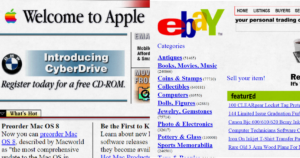Creating digital products that users love and find intuitive is no accident. It involves a deliberate process that revolves around understanding users, gathering insights, and fine-tuning designs through usability testing. In this no-nonsense guide, we’ll unveil our approach to user research and usability testing, demystifying how we ensure the final product aligns with user needs.
What Is User-Centric Design?
User-Centric Design is all about putting the user at the heart of the design process. It means that we don’t guess what users want; we ask them and involve them throughout the journey.
The Step-by-Step Guide
1. User Research: Getting to Know You
The first step is like going on a fact-finding mission. We want to understand who our users are, what they do, and what they need. This involves:
- Surveys and Questionnaires: Like asking guests about their food preferences before hosting a dinner party.
- User Interviews: Think of this as a friendly chat with your guests to find out what they’d enjoy at the party.
- Data Analysis: It’s like checking your guest list to see who’s coming and what they like.
2. Creating Personas: Meet Our Guests
We create user personas based on the information we gather. These are like detailed profiles of our guests, including their needs, goals, and pain points. It’s like preparing a guest list with notes on each person’s preferences.
3. Wireframing: Sketching the Party Plan
Now that we know our guests, it’s time to plan the party. Wireframing is like sketching out the layout of the party venue and where everything will go. It’s a blueprint for our design.
4. Prototyping: Building a Mini Party
We create a working model of the digital product. It’s like setting up a mini party to see how everything will work. This helps us make sure that what we’re planning makes sense and is enjoyable for our guests (users).
5. Usability Testing: The Dress Rehearsal
Before the big event (launch), we have a dress rehearsal. Usability testing involves real users trying out our prototype. It’s like inviting a few friends over to test the party setup and gather feedback.
6. Iteration: Tweaking for Perfection
Based on feedback from the usability test, we make improvements. It’s like adjusting the party setup and menu based on our friends’ suggestions.
7. Implementation: The Grand Opening
With all the planning and testing done, it’s time to build the real thing. This is like hosting the actual party, with everything set up just the way our guests (users) will love it.
The Big Picture: Why It Matters
User research and usability testing aren’t just extra steps; they’re the backbone of creating a digital product that truly meets user needs. It’s like throwing a party that everyone enjoys, thanks to careful planning and listening to what guests want.
Conclusion
Our approach to user research and usability testing is all about creating digital products that users love because they’ve been involved from the start. We gather insights, create user personas, sketch out designs, and conduct usability tests to ensure the final product is a hit. It’s like hosting a party where everyone walks away with a smile, and that’s our ultimate goal—happy users!



